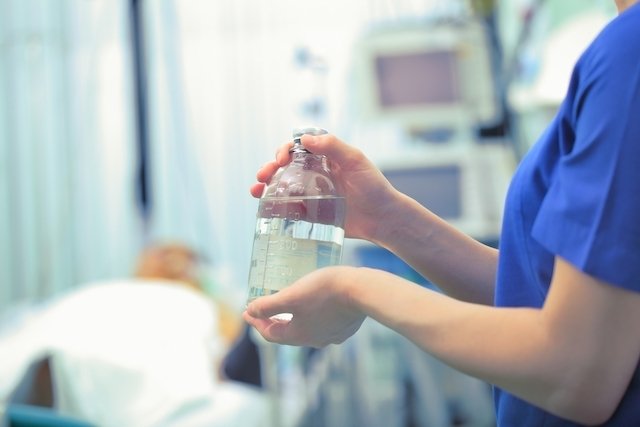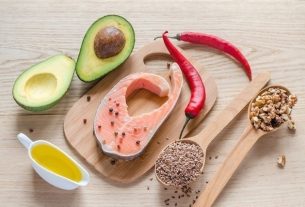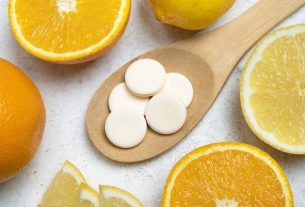Parenteral nutrition (PN) is a feeding method that is carried out intravenously, in which nutrients, or part of them, are administered directly into the bloodstream.
This type of food serves to provide part or all of a person’s caloric needs, and is recommended when the person needs to keep the gastrointestinal tract at rest, or when it is necessary to supplement oral or enteral nutrition.
Parenteral nutrition is not physiological, as it does not exist in the brain or intestinal phase of digestion, with a formula that contains carbohydrates, lipids, proteins, vitamins and trace elements being administered directly into the vein.

When is indicated
Parenteral nutrition is mainly indicated for people who, for some reason, do not have a non-functioning gastrointestinal tract or must keep it at rest. Furthermore, it is also indicated when the oral route or nutritional contribution through enteral nutrition cannot be performed for 5 to 7 days, being mainly indicated to prevent or correct malnutrition.
The indication can be short-term, when carried out for up to 1 month, or long-term, when indicated for a longer period:
If parenteral nutrition is indicated, it is necessary to monitor blood tests, and it is important to maintain control of electrolytes, blood glucose, urea, creatinine, levels of vitamins and minerals, as well as tests that evaluate the liver, as food directly in the vein can cause changes in these parameters.
How to administer parenteral nutrition
Most of the time, parenteral nutrition is carried out by the nursing team at the hospital, however, when it is necessary to administer it at home, it is important to first evaluate the food bag, ensuring that it is within the expiration date, that the bag remains intact and maintains its normal characteristics.
Then, in the case of administration through a peripheral catheter, the following steps must be followed:
- Wash your hands with soap and water;
- Stop any serum or medication infusion being administered through the catheter;
- Disinfect the IV system connection using a sterilized alcohol pad;
- Remove the serum system that was in place;
- Slowly inject 20 mL of saline solution;
- Connect the parenteral nutrition system.
This entire procedure must be carried out using the material indicated by the doctor or nurse, as well as a calibrated administration pump that ensures that the food is supplied at the correct speed and for the time indicated by the doctor.
This step-by-step guide must also be taught and trained with the nurse at the hospital, to resolve any doubts and ensure that no complications arise.
What to watch out for during administration
During the administration of parenteral nutrition, it is important to evaluate the catheter insertion site, assessing the presence of swelling, redness or pain. If any of these signs appear, it is recommended to stop parenteral nutrition and go to the hospital.
Type of parenteral nutrition
This type of nutrition can be classified into:
1. According to the route of administration
The classification of parenteral nutrition according to the route of administration is:
- Central parenteral nutrition (NPC): is a type of parenteral nutrition that allows the administration of feeding solution through a catheter placed directly into a large vein, such as the vena cava. The NPC can be used for a period longer than 7 days.
- Peripheral parenteral nutrition (PPN): In this type of parenteral nutrition, feeding solutions are administered through a catheter placed in a small vein in the hand and arm, for example, and is indicated when the person needs parenteral nutrition for up to 7 to 10 days or when it is not possible. perform the NPC.
A catheter is a device that allows drugs and solutions to be injected directly into a vein.
2. According to its components
Parenteral nutrition can also be classified according to its components into:
- Partial parenteral nutrition (PPN): Only some types of nutrients are administered intravenously, being used as a complement, that is, when the person, for some reason, is unable to meet all nutritional requirements through oral or enteral nutrition;
- Total parenteral nutrition (TPN): All types of nutrients are administered intravenously, such as carbohydrates, proteins, fats, vitamins and minerals.
In parenteral nutrition, in general, several solutions are administered that have different concentrations depending on the person’s nutritional needs.
Possible complications
The complications that can arise with parenteral nutrition are very varied and, therefore, it is always important to follow all the instructions given by the doctor and other health professionals.
The main types of complications can be grouped according to the duration of PN:
1. Short term
In the short term, the most common complications include those related to central venous catheter placement, such as pneumothorax, hydrothorax, internal bleeding, arm nerve damage, or blood vessel injury.
Furthermore, infection of the catheter wound, inflammation of the blood vessel, obstruction of the catheter, thrombosis or generalized infection by viruses, bacteria or fungi may occur.
At a metabolic level, most complications include changes in blood sugar levels, metabolic acidosis or alkalosis, a decrease in essential fatty acids, changes in electrolytes (sodium, potassium, calcium) and an increase in urea or creatinine.
2. Long term
When parenteral nutrition is used long-term, the main complications include changes in the liver and gallbladder, such as fatty liver, cholecystitis and portal fibrosis. For this reason, it is common for people to present an increase in liver enzymes in blood tests (transaminase, alkaline phosphatase, gamma-GT and total bilirubin).
In addition, there may also be a deficiency of fatty acids and carnitine, changes in the intestinal flora and atrophy of the vellus and intestinal muscles.

Sign up for our newsletter and stay up to date with exclusive news
that can transform your routine!
Warning: Undefined array key "title" in /home/storelat/public_html/wp-content/plugins/link-whisper-premium/templates/frontend/related-posts.php on line 12
Warning: Undefined array key "title_tag" in /home/storelat/public_html/wp-content/plugins/link-whisper-premium/templates/frontend/related-posts.php on line 13



